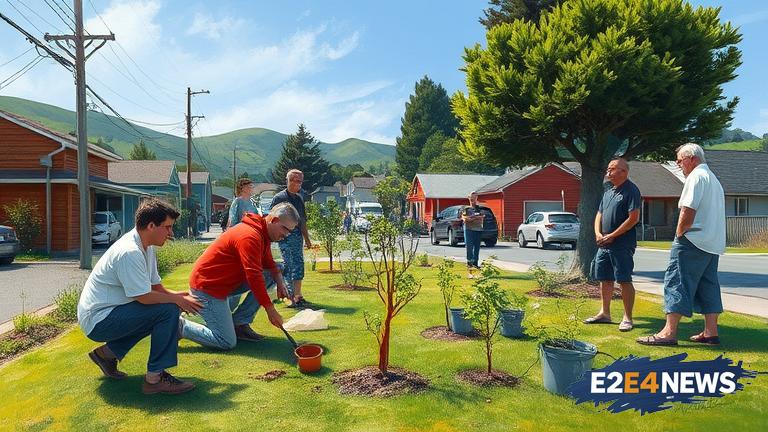In a heartwarming display of community spirit, a tiny urban forest has been planted in Waikanae, a small town on the Kapiti Coast of New Zealand’s North Island. The project, which was made possible through the collective efforts of local residents, businesses, and organizations, aims to create a thriving green space that will provide numerous benefits for both the community and the environment. The tiny urban forest, which covers an area of approximately 1,000 square meters, features a diverse range of native plant species, including trees, shrubs, and wildflowers. These plants were carefully selected to attract native birds, bees, and other pollinators, and to help mitigate the effects of climate change by absorbing carbon dioxide and producing oxygen. The forest was planted on a previously vacant lot, which had been earmarked for development but was instead donated to the community for the purpose of creating a green space. The project was led by a group of dedicated volunteers, who worked tirelessly to design, plan, and implement the forest, with support from local businesses, schools, and community groups. The community came together to plant the forest, with over 100 people attending the planting day to lend a hand. The event was a huge success, with everyone working together to get the plants in the ground and the forest off to a great start. The tiny urban forest is not only a beautiful green space, but it also provides a range of benefits for the community, including improved air quality, reduced noise pollution, and increased biodiversity. The forest will also serve as a community hub, with plans for educational programs, workshops, and events to be held on site. The project has been hailed as a model for community-led urban forestry initiatives, and is expected to inspire similar projects in other towns and cities across New Zealand. The tiny urban forest is a testament to the power of community spirit and the positive impact that can be achieved when people come together to work towards a common goal. The project has also highlighted the importance of green spaces in urban areas, and the need for more initiatives like this to be implemented in towns and cities across the country. As the forest grows and matures, it is expected to become a beloved landmark in Waikanae, and a source of pride for the community. The project has also sparked interest in the potential for urban forestry to help address the challenges posed by climate change, and to promote sustainable development in urban areas. The tiny urban forest in Waikanae is a shining example of what can be achieved when communities come together to create positive change, and is an inspiration to others to get involved and make a difference. The forest is also expected to provide a range of economic benefits, including increased property values and tourism revenue. The project has been supported by a range of local businesses, including nurseries, landscaping companies, and environmental organizations. The community has come together to maintain the forest, with a team of volunteers working to ensure that the plants are watered, pruned, and cared for. The tiny urban forest is a valuable resource for the community, and is expected to provide a range of benefits for generations to come. The project has also highlighted the importance of community engagement and participation in urban planning and development. The tiny urban forest in Waikanae is a model for community-led urban forestry initiatives, and is expected to inspire similar projects in other towns and cities across New Zealand.





